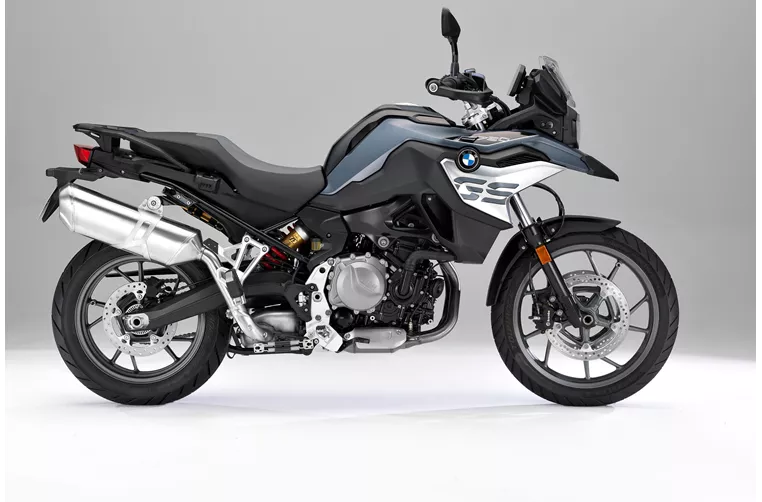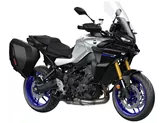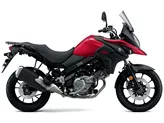BMW F 750 GS 2018 vs. Triumph Tiger 900 GT Pro 2020

BMW F 750 GS 2018
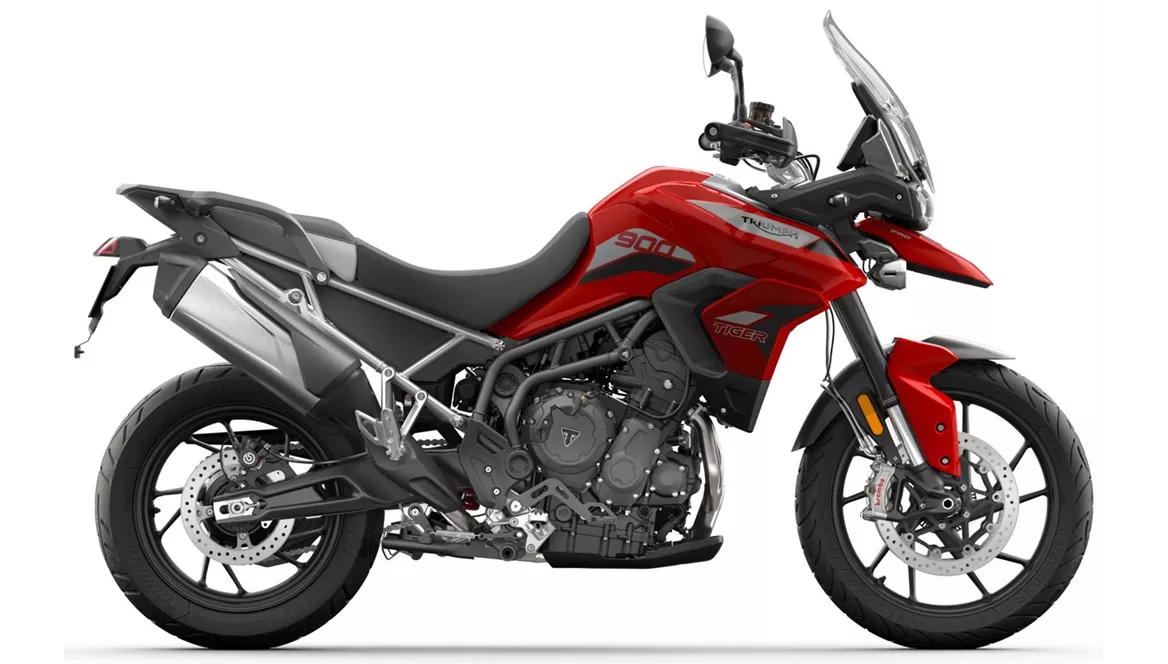
Triumph Tiger 900 GT Pro 2020
Vue d’ensemble - BMW F 750 GS 2018 vs Triumph Tiger 900 GT Pro 2020
The BMW F 750 GS 2018 and the Triumph Tiger 900 GT Pro 2020 are both enduro motorcycles that offer a combination of on-road and off-road capabilities. While they share some similarities in terms of engine type, front and rear suspension, and tire dimensions, there are also notable differences between the two models.
In terms of engine specifications, the BMW F 750 GS 2018 is equipped with a 2-cylinder in-line engine with a displacement of 853ccm, producing 77 horsepower and 83 Nm of torque. On the other hand, the Triumph Tiger 900 GT Pro 2020 features a 3-cylinder in-line engine with a larger displacement of 888ccm, delivering 95.2 horsepower and 87 Nm of torque. This gives the Triumph Tiger 900 GT Pro a slight advantage in terms of power and torque.
Both motorcycles feature electric starters and chain transmissions, providing smooth and efficient power delivery. However, the BMW F 750 GS 2018 has a steel frame with a tubular, load-bearing engine design, while the Triumph Tiger 900 GT Pro 2020 also has a steel frame but with a tubular design. The BMW F 750 GS 2018 has a slightly lower rake angle of 63 degrees compared to the Triumph Tiger 900 GT Pro's 65.4 degrees, which may affect the handling characteristics of the motorcycles.

BMW F 750 GS 2018
In terms of suspension, the BMW F 750 GS 2018 is equipped with a telescopic fork front suspension with a diameter of 41mm and a travel of 151mm. The rear suspension consists of a swing arm with a monoshock and offers a travel of 177mm, with preload and rebound adjustment. On the other hand, the Triumph Tiger 900 GT Pro 2020 features an upside-down telescopic fork front suspension with a larger diameter of 45mm and a travel of 180mm. The rear suspension is also a swing arm with a monoshock, offering a travel of 170mm and preload and rebound adjustment. The Triumph Tiger 900 GT Pro's suspension also benefits from electronic adjustability, allowing for a more personalized riding experience.
Both motorcycles are equipped with double disk front brakes for reliable stopping power. The BMW F 750 GS 2018 features ABS as an advanced rider assistance system, while the Triumph Tiger 900 GT Pro 2020 offers a more comprehensive range of advanced rider assistance systems, including suspension electronically adjustable, riding modes, cornering ABS, ride by wire, and traction control.
In terms of dimensions and weights, both motorcycles have a 19-inch front tire diameter and a 150mm rear tire width with a 17-inch rear tire diameter. The wheelbase of the BMW F 750 GS 2018 is slightly longer at 1559mm compared to the Triumph Tiger 900 GT Pro's 1556mm. The seat height of the BMW F 750 GS 2018 is also slightly higher at 815mm compared to the Triumph Tiger 900 GT Pro's 810mm. However, the Triumph Tiger 900 GT Pro has a larger fuel tank capacity of 20 liters, compared to the BMW F 750 GS 2018's 15-liter capacity.

Triumph Tiger 900 GT Pro 2020
In terms of strengths, the BMW F 750 GS 2018 offers a powerful engine with a pleasant sound, a comfortable seating position, stable brakes, playful handling, an extensive range of accessories, riding modes, traction control, and LED headlights. On the other hand, the Triumph Tiger 900 GT Pro 2020 boasts a three-cylinder engine full of character, agile turn-in behavior, a quickshifter as standard, electronically adjustable suspension strut, generous standard equipment, good ergonomics, good wind and weather protection, and long-distance capability.
As for weaknesses, the BMW F 750 GS 2018 is criticized for its very low bikini screen and inconspicuous appearance. The Triumph Tiger 900 GT Pro 2020, on the other hand, has been noted for having a flood of switches on the left handlebar, which may be overwhelming for some riders.
Overall, both the BMW F 750 GS 2018 and the Triumph Tiger 900 GT Pro 2020 offer their own unique strengths and weaknesses. The BMW F 750 GS 2018 may appeal to riders looking for a comfortable and versatile motorcycle with a powerful engine, while the Triumph Tiger 900 GT Pro 2020 may be more suitable for those seeking a characterful three-cylinder engine and advanced rider assistance systems. Ultimately, the choice between the two models will depend on individual preferences and riding needs.
Caractéristiques techniques BMW F 750 GS 2018 par rapport à Triumph Tiger 900 GT Pro 2020
Avantages et inconvénients en comparaison
Avantages et inconvénients en comparaison
BMW F 750 GS 2018
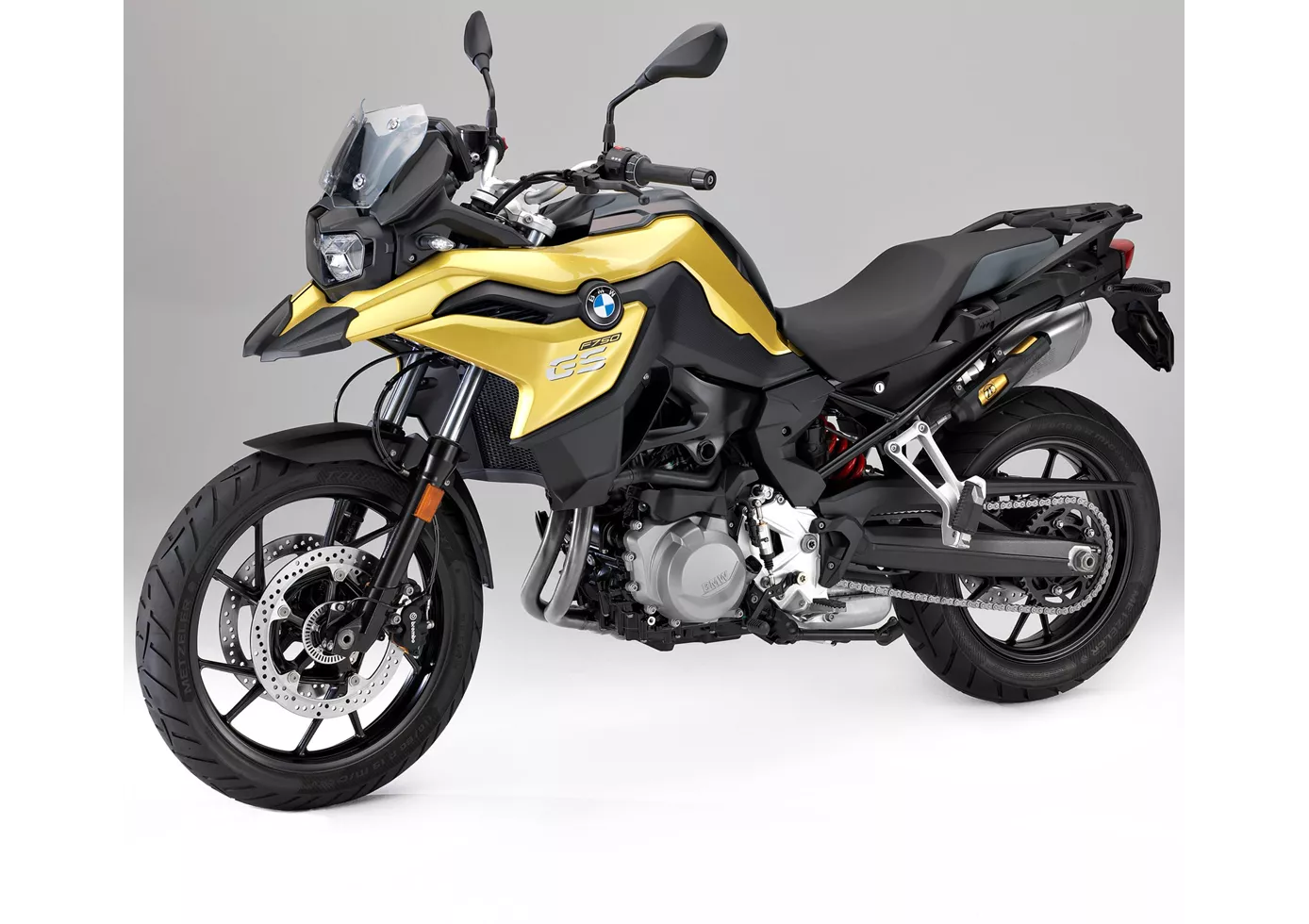
Ceux qui considèrent la BMW F 750 GS uniquement comme une moto pour débutants se trompent. Certes, la hauteur de selle basse, la maniabilité simple et la réactivité agréable du moteur sont effectivement adaptées aux débutants, mais la "petite" GS procure aussi un énorme plaisir aux pilotes confirmés. La possibilité d'élever la F 750 GS au niveau d'une moto haut de gamme grâce à toutes sortes de caractéristiques de luxe est unique et en fait le loup ultime dans la bergerie.
Triumph Tiger 900 GT Pro 2020

Les bonnes choses prennent du temps, dit-on. Chez Triumph, on s'y est tenu et avec la Tiger 900 GT Pro, on a mis sur les jantes en fonte une moto qui poursuit la longue et fructueuse voie de la 800 avec de nombreuses améliorations de détails et qui est aussi bien une moto pratique pour le quotidien que pour des tours et des voyages prolongés. Le triple est devenu plus pointu, tout en restant un moteur harmonieux avec lequel même les débutants ne peuvent pas se tromper, sans pour autant ennuyer les motards expérimentés. Et ce, grâce à des débattements de suspension suffisants sur des routes de différentes qualités ainsi que sur des passages tout-terrain tout à fait modérés. Nous n'avons pas trouvé grand-chose à redire à la première impression, mais nous allons certainement examiner la Tiger de plus près.
Comparaison des prix Prix moyen du marché BMW F 750 GS vs Triumph Tiger 900 GT Pro
There are a few key differences between a BMW F 750 GS 2018 and a Triumph Tiger 900 GT Pro 2020. In terms of price, the actual average price of a Triumph Tiger 900 GT Pro 2020 is about 29% higher. There are the same number of bikes of both models available on the 1000PS.de marketplace, specifically 5. It takes less time to sell a BMW F 750 GS with 77 days compared to 88 days for a Triumph Tiger 900 GT Pro. Since model year 2018 1000PS.de editors have written 23 reviews for the BMW F 750 GS and 10 reviews for the Triumph Tiger 900 GT Pro since model year 2020. The first review for the BMW F 750 GS was published on 11/7/2017 and now has more than 54,400 views. This compares to more than 65,300 views for the first review on Triumph Tiger 900 GT Pro published on 12/3/2019.
